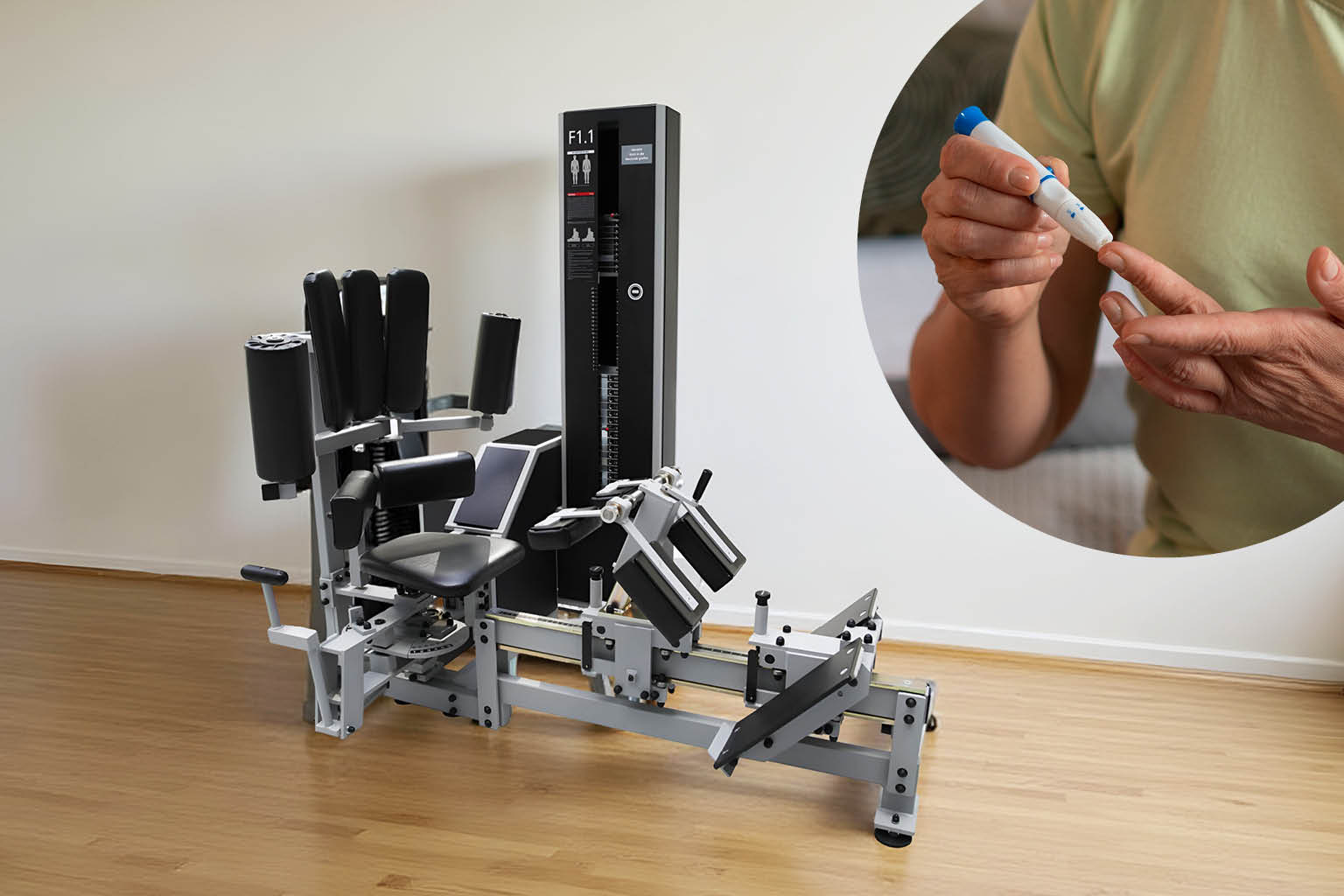Why Strength Training is a Game-Changer for Diabetes Management
Managing diabetes isn’t just about medication and diet—exercise plays a crucial role too. While aerobic activity like walking or cycling often gets the spotlight, strength training (also called resistance training) has emerged as a powerful tool to control blood sugar, improve insulin sensitivity, and enhance overall health for people with type 2 diabetes.
In this blog, we’ll explore why strength training is essential for diabetes management and how our medical gym provides a safe and scientifically advanced environment for people with diabetes, joint pain, and muscle issues.
How Strength Training Helps Control Diabetes
Strength training helps your body manage blood sugar more effectively by:
- Building lean muscle mass: Muscles use glucose for energy, so more muscle means better glucose uptake from your blood.
- Improving insulin sensitivity: Strength training reduces insulin resistance, allowing your body to use insulin more efficiently.
- Reducing harmful fat: It lowers visceral fat, which is strongly linked to type 2 diabetes and heart disease.
- Supporting joint health and mobility: Making daily activities easier and reducing the risk of falls or injuries.
Studies show that strength training, even twice a week, can lead to significant improvements in HbA1c levels, blood pressure, and cholesterol in people with type 2 diabetes.
Why Our Medical Gym is Different
Unlike traditional gyms, our medical gym is designed specifically for individuals with diabetes, joint pain, injuries, and other chronic health conditions. Here’s what makes us unique:
- Advanced MedX Equipment from the USA
We use MedX machines, imported from the USA, known globally for their precision and ability to isolate and strengthen muscles safely. These machines allow us to design programs that protect vulnerable joints while effectively improving strength and metabolism. - German-Engineered Technology for Superior Safety
Our gym is equipped with German-engineered systems that ensure smooth, controlled movements and minimize strain on joints and soft tissues—perfect for those with arthritis, back pain, or recovering from injuries. - Guided by Physiotherapists
Before starting, every member undergoes a comprehensive health and movement assessment by a qualified physiotherapist. This helps us design a safe and customized plan to maximize your results while protecting you from injuries. - Safe for Joint and Muscle Problems
Our equipment and techniques are specially selected to be gentle on joints and suitable for people with arthritis, back pain, and other musculoskeletal concerns. - Progressive and Monitored Training
We focus on building strength safely and progressively under expert supervision, ensuring you gain confidence and see measurable improvements. - Diabetes-Focused Programs
We understand the unique needs of people with diabetes and combine strength training, aerobic exercises, and lifestyle counselling to help you achieve better blood sugar control and overall health.
Exercise Guidelines for Diabetes: How to Get Started
If you’re managing diabetes or prediabetes, here are key recommendations for incorporating strength training and aerobic exercise into your routine:
- Commit to consistency
Plan for 6–12 months of regular strength training. Focus on large muscle groups like legs, back, and chest to build lean body mass and rev up your metabolism. - Start with professional guidance
If you have injuries, joint issues, or other health conditions, consult a physiotherapist or exercise specialist to modify your routine safely and prevent complications. - Mix it up for maximum benefit
- Strength training: At least 2 non-consecutive days per week, working all major muscle groups. Start with light to moderate resistance and progress gradually as tolerated.
- Aerobic exercise: Aim for 150 minutes of moderate-intensity aerobic activity per week (e.g., brisk walking, cycling), spread across 3–4 days.
- Focus on intensity
The greater the exertion, the more significant the impact on metabolism. Gradually aim for moderate to high-intensity workouts to maximize results. - Lifestyle change is key
Combine regular exercise with a balanced, nutrient-dense diet for optimal blood glucose control, weight management, and cardiovascular health. - Maintain your gains
Start with a higher frequency (3 strength sessions per week), then reduce to 2 sessions per week during the maintenance phase to sustain results and prevent regression.
Take Charge of Your Health Safely at Our Advanced Medical Gym
Strength training doesn’t just help you control diabetes—it empowers you to take charge of your health and well-being.
At Orthocure Gyms we provide:
MedX equipment from the USA for precise muscle targeting
German-engineered systems for joint-safe workouts
Personalized care plans by physiotherapists
Specialized support for diabetes and joint health
It’s never too late to start. By incorporating regular strength training into your weekly routine in a safe and guided environment, you can significantly improve your diabetes control and enjoy a healthier, more active life.
Ready to begin your journey? Book your health assessment with our physiotherapy team today and experience the difference of scientifically advanced strength training.





